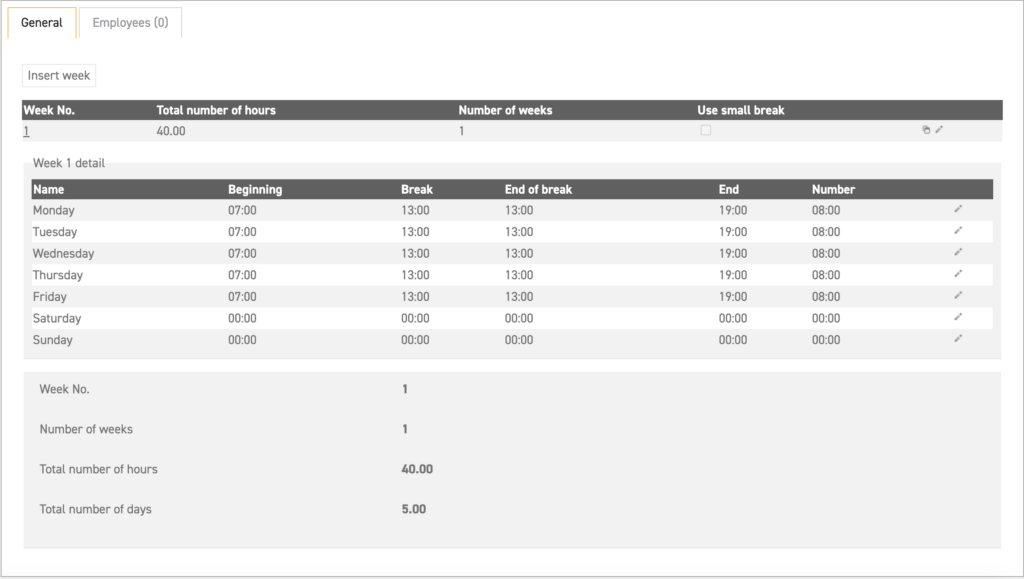Click here to read more about schedules.
Click here to read more about schedules with multiple different weeks.
Click here to read more about adding small breaks to the schedule.
When employees have a varying work schedule, it might be convenient to create a flexible schedule for them. A flex schedule allows you to maximize the total number of hours in a working day, which creates the opportunity for employees to request leave for different times.
Below is a step-by-step explanation on how to create a flex schedule.
Example of a flex schedule of an employee working full-time:
It is important to make sure that the total number of hours input at “Hours in a day” corresponds to the total number of hours the employee is supposed to work daily.
In this example, an employee can do their work between the hours of 7 in the morning and 7 at night. The “Number” column says 8 hours, because this is the number of hours the employee is supposed to work in a workday. The employee cannot request more leave per workday than the total number filled in here. Therefore, there is no need to worry that the employee might request too many hours of leave with a flex schedule.
This schedule employs a break of 0 minutes. This does not entail that the employee will not be able to take a break, but serves to ensure that the number of hours deducted for taking a morning or afternoon off will be correct.
Click here to read more about work shifts.
Click here to read more about schedules.
Click here to read more about schedules with multiple different weeks.
Click here to read more about adding small breaks to the schedule.


